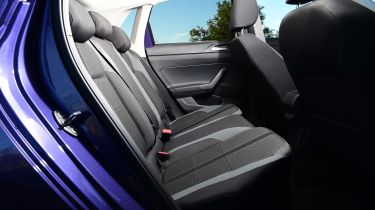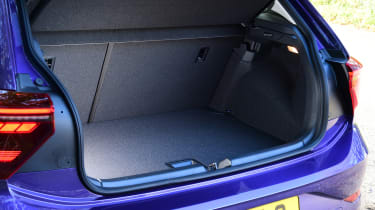Volkswagen Polo - Practicality, comfort and boot space
With good boot space and plenty of room for passengers, the Volkswagen Polo is a practical supermini

Though superminis are still popular cars in Europe, more buyers are opting for five-door accessibility over three-door sportiness, and the Mk6 Polo is now sold strictly with five doors.
It’s a totally conventional supermini set-up, unlike the taller Honda Jazz with its MPV-style raised driving position and deep dashboard. There’s plenty of head, leg and shoulder room for two full-size adults in the front of the Polo, while there’s lots of adjustment in the steering wheel, seat, and seat belt height for drivers of all sizes to get comfortable. Manual front seat height adjustment is standard across the range, but you’ll need to pay a modest £125 to get front seat lumbar adjustment on Life trim, or upgrade to Style, R-Line, or GTI. The modern, pared-back dashboard layout is logically laid out and built with classy materials. It’s also home to a decent number of storage bins and cubbies.
Visibility is good, and it’s easy to get a sense of where the Polo’s corners are, although the thick C-pillars at the back are less than ideal. Front and rear parking parking sensors are standard on Style models and above, along with sat-nav and dual-zone air conditioning.
Size
Using a modified version of the Golf’s platform called MQB A0, the Mk6 VW Polo grows in size compared to the fifth-generation car. Against the tape measure, it’s 4,074mm long, 1,751mm wide, and 1,451mm tall. Compared to the top-selling Vauxhall Corsa, it’s longer and taller, but not quite as wide. Helpfully for passengers, the Polo has a much longer wheelbase (2,552mm vs 2,538mm), which explains why rear leg room in the Volkswagen is much more accommodating than that rival for those in the back.
Leg room, head room & passenger space
That longer wheelbase means that the Polo is a roomy car for the class in terms of passenger space. Three in the back remains a tight fit though, because a large central tunnel cuts noticeably into legroom for the middle passenger.
Used - available now
There are two ISOFIX child seat mounting points for the outer rear seat positions, along with (unusually for this class) an ISOFIX point for the front passenger seat. That could be a very helpful feature for any parents who are concerned about their little one while out and about, because they don’t have to waste time running to the back of the car should anything happen. However, we’d strongly advise you to check that the passenger airbag is deactivated if you decide to fit a child seat in the front.
Boot
The Polo’s boot sizes up at 351-litres with the rear seats raised, meaning it's neck and neck with the SEAT Ibiza. It’s also a huge advance on the previous generation Polo’s 280-litre load space. It still trails the 380-litre of space provided by the Skoda Fabia, although the Polo has an adjustable height boot floor to give it a load area level with the boot opening. While this does take up space, it provides an area below in which to hide valuables.
The rear bench folds forward with a 60:40 split, although the seats don’t go completely flat. The cargo bay expands to an impressive 1,380-litres with the seats lowered, firmly planting the Polo’s flag as a practical supermini.














